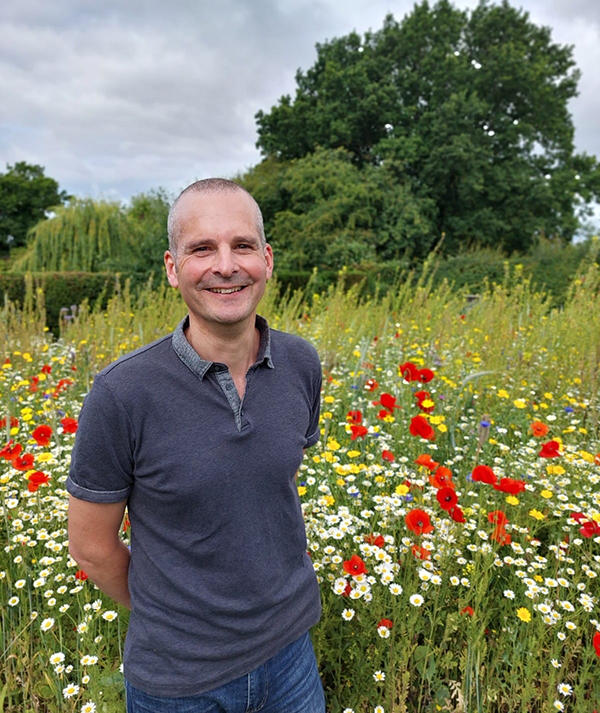An academic at the University of Worcester is to feature on BBC Gardeners’ World tomorrow (April 28) at 9pm on BBC 2.
 Dr Duncan Westbury in his garden
Dr Duncan Westbury in his garden
Dr Duncan Westbury, Course Leader for the University’s BSc Environmental Management and Sustainability degree, will be showing viewers around his garden, which he has made into a haven for wildlife.
Over the last 10 years, Dr Westbury has transformed his garden from one that was formal in design, to one that is now rich in biodiversity, supporting insects, amphibians, reptiles, birds and small mammals.
“My ethos has been that every plant in the garden must have a purpose, be it to provide food for us to eat, or food, shelter and nesting sites for native wildlife,” he said. “The ability of the habitats I have created to capture carbon and store this in the soil has become an increasing focus. Overall, this means that many horticultural plants have been removed from the garden and the vast majority of plants, including trees, are therefore native to the UK. Native plants to support native species!”
Dr Westbury is leading the University’s BSc in Environmental Management and Sustainability, which educates the next generation of environmentalists. His own research is focussed on how we can utilise the benefits of species which are supported by wildflower strips in the farmed landscape. This has included studies in UK apple and cherry orchards, and orange orchards in southern Spain.
“The principles and approaches now used by farmers and growers are the same as what I have done in our garden,” he said. “We have a wildflower strip, a species-rich meadow, a bumblebird patch (an area that supports bumblebees in the summer and birds during winter), mini-woodland areas, a wildlife pond, and an eco-climate friendly lawn. These habitats are complemented with a range of bird boxes, bat boxes, bee hotels, habitat piles, and hedgehog shelters and feeding stations. Making all this space for nature means that we can grow fruit and vegetables organically whilst supporting wildlife.”
Dr Westbury said he was delighted that Gardeners’ World were featuring his garden.
“I have always wanted to share what I do with as many people as possible, and this has provided a wonderful platform to do this,” he said. “If I inspire one more person to do more in their garden for wildlife then then that is one more garden that is doing their bit, but hopefully with 2.5m+ viewers, I’ll encourage a few more!”
Dr Westbury said all outdoor spaces, including apartment balconies, can be used to support wildlife. “If you don’t have space for a wildflower patch, consider planting a few individual wildflower plants within your flowerbed, if you only have space for hanging baskets, trailing wildflowers like bird’s-foot trefoil make excellent planting companions with your more formal horticultural plants such as lobelia,” he said.
“If you want to make a difference for wildlife, start small, but think big! Many wildflowers are easy to grow and don’t need watering or feeding to make them thrive. If you have a lawn, raise the cutting height to about 6cm. This will immediately provide a better habitat for ground active insects, especially ground beetles which will help control many garden pests. In turn, they become an important food resource for hedgehogs.”